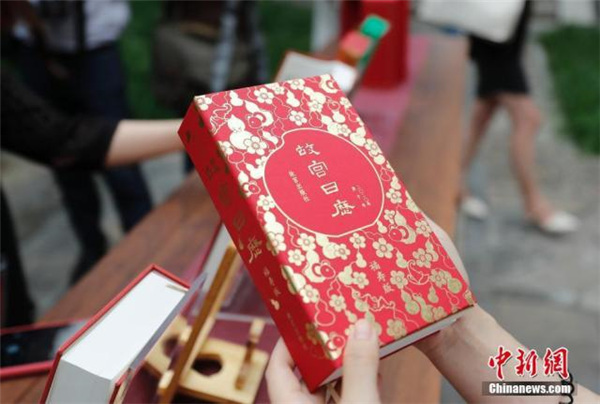
Culture-themed calendars like the 2020 datebook published by Forbidden City Publishing House are selling well.(Photo: Chinanews.com)
Du Xin, 32, picked up a calendar in a bookstore in North China's Tianjin. Designed with a crimson and dark green cover and bound by two golden rings, the calendar features many traditional Chinese elements.
"Nowadays many people don't use calendars anymore, but I think calendars today have become more delicate, interesting and very different from those in the past," Du said.
Traditionally, calendars have played an important role in Chinese culture. They provide the lunar dates for guiding the agricultural life along with what is suitable to do on each day. Many people use them for selecting auspicious days for weddings, funerals, moving, or starting a business.
However, they had lost popularity, especially among young people as many turn to digital calendars on smartphones. The new decade has seen the market abounds with creative calendars with novel designs and interesting content that have regained popularity among young people.
Du's calendar is one of them. Nearly 300,000 such calendars had been sold nationwide by the end of December 2019, according to Wang Lei, shop manager of Sisyphe bookstore in Tianjin.
Apart from displaying dates on each page of the calendar, Du's calendar pages include a question related to people's lives or the specific date, as well as an excerpt picked from a classic book.
For example, on the page of Jan 24, the Chinese New Year's Eve and a day for family reunions, the question asks "Have you returned home tonight?" It was accompanied by an excerpt describing people's celebration of the festival from Chinese writer Laoshe.
Zhou Xiaowei, product manager of Sisyphe Calendar, said customers buy the calendar more for its creativity than simply for checking dates. "They want the paper calendar to show their individuality," she said.
Wang, the shop manager, said apart from buying the calendars for themselves, many customers send them as gifts to their family members and friends.
Another creative product, Owspace Desk Calendar, is marketed as an old calendar for new generations due to its inspirations drawn from traditional calendars.
Like the old calendars, the black-and-white calendar requires people to tear off the date in order to move on to the next. It was also designed with dos and don'ts, but often in an interesting tone, such as "Don't do nothing today" or "Stop daydreaming."
Xue Jing, product director of Owspace, said that it usually takes eight to 10 months to design the look and edit the content of the calendars. The company sold 70,000 copies in 2015, and individual purchases surged to over 350,000 copies in 2018.
Creative and specific designs are seen on other calendars too. The Palace Museum's themed calendar for 2020 features the architecture of the Forbidden City, as well as related cultural relics and stories. It has become one of the museum's most popular souvenirs.
Another calendar, developed by Chinese movie-rating site Douban, shows a movie with film stills and classic lines every day, and the National Museum of China released its 2020 calendar featuring the information of cultural relics.
"Calendars can bring you personal feelings," Du said. "For me, I feel the moment slip away as I turn the pages."


